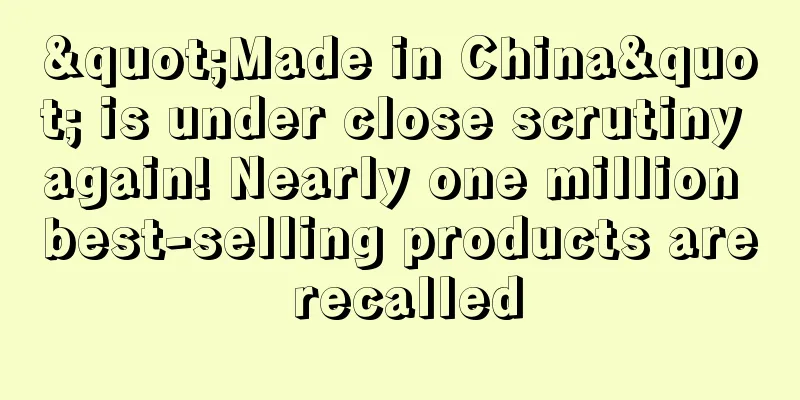What is RoHS Directive? RoHS Directive Review, Features

|
RoHS is a mandatory standard established by EU legislation. Its full name is "Directive on the restriction of the use of certain hazardous substances in electrical and electronic equipment".
About RoHS Directive The RoHS directive was officially implemented on July 1, 2006. It is mainly used to regulate the material and process standards of electronic and electrical products to make them more beneficial to human health and environmental protection. The purpose of this standard is to eliminate six substances in electrical and electronic products, including lead, mercury, cadmium, hexavalent chromium, polybrominated biphenyls and polybrominated diphenyl ethers (Note: the correct Chinese name of PBDE is polybrominated diphenyl ethers, and polybrominated diphenyl ethers is an incorrect term), and it is emphasized that the lead content cannot exceed 0.1%.
Applicable countries United Kingdom, 26 EU member states: France, Germany, Italy, Netherlands, Belgium, Luxembourg, Denmark, Ireland, Greece, Spain, Portugal, Austria, Sweden, Finland, Cyprus, Hungary, Czech Republic, Estonia, Latvia, Lithuania, Malta, Poland, Slovakia, Slovenia, Bulgaria, Romania.
Applicable Products The RoHS directive controls product types, covering the electronic and electrical products listed in the catalog below AC1000V and DC1500V: 1. Large household appliances: refrigerators, washing machines, microwave ovens, air conditioners, etc.; 2. Small household appliances: vacuum cleaners, electric irons, hair dryers, ovens, clocks, etc.; 3. IT and communication equipment: computers, fax machines, telephones, mobile phones, etc.; 4. Civilian devices: radios, televisions, video recorders, musical instruments, etc.; 5. Lighting appliances: fluorescent lamps other than household lighting, lighting control devices; 6. Power tools: electric drill, lathe, welding, sprayer, etc.; 7. Toys/entertainment and sports equipment: electric cars, video game consoles, automatic gambling machines, etc.; 8. Medical equipment: radiotherapy equipment, electrocardiogram tester, analytical instruments, etc.; 9. Monitoring/control devices: smoke detectors, thermostats, factory monitoring and control machines, etc.; 10. Vending machines. It not only includes the whole machine product, but also includes the parts, raw materials and packaging used to produce the whole machine, and is related to the entire production chain.
Certification Process 1. Fill in the RoHS test application form and download it from the RoHS Certification Center website. 2. Quotation settlement. After submitting the application, the customer sends the sample (or express delivery) to the testing agency. The testing agency will reasonably split the sample as required and feedback the product split quantity and testing fee to the customer. After the customer agrees, the testing fee will be deposited into the designated account (cash payment is also possible). 3. After the payment is received, the test will be arranged immediately. Generally, the test will be completed within one week. 4. Reports can be issued by express delivery, fax, email or collected in person by the submitter.
Certification bodies Any third-party notarization laboratory with the corresponding qualifications and capabilities can provide similar services to enterprises.
How to Test In fact, RoHS certification is not that mysterious. It is similar to the CE certification, FCC certification and other certifications that people are familiar with. As long as a third-party notarized laboratory has the corresponding qualifications and capabilities, it can provide similar services to enterprises. It is nothing more than sending the relevant products to a professional laboratory for testing and analysis. The six harmful substances such as lead, cadmium, mercury, hexavalent chromium, polybrominated biphenyls (PBB), and polybrominated diphenyl ethers (PBDE) are tested to see whether they comply with the requirements of the RoHS Directive. If they do, a RoHS conformity report and certificate can be obtained. If not, other products that meet the requirements must be found as substitutes.
Purpose The RoHS Directive is mainly used to regulate the materials and process standards of electronic and electrical products to make them more beneficial to human health and environmental protection.
significance If your products are not RoHS certified, it will cause immeasurable damage to the manufacturers. Your products will then be ignored and you will lose the market. If your products are lucky enough to enter the other party's market, once they are discovered, you will be subject to high fines or even criminal detention, which may lead to the closure of the entire enterprise.
develop On June 4, 2015, the Official Journal of the European Union (OJ) published the RoHS2.0 revised Directive (EU) 2015/863, which officially included DEHP, BBP, DBP and DIBP in the list of restricted substances in Appendix II. |
>>: What is MiKe? MiKe Review, Features
Recommend
Sales and orders increased 2.5 times, and the epidemic prompted Lazada to accelerate its development
Lazada Philippines expects sales to continue to g...
What is Jijia Logistics? Jijia Logistics Review, Features
Qianhai Jizhijia Logistics (Shenzhen) Co., Ltd. w...
What is CB CONNECT Brazil Warehouse (Shanghai Yichuan)? CB CONNECT Brazil Warehouse (Shanghai Yichuan) Review, Features
CB CONNECT Brazil Warehouse is a company specializ...
Market value reaches 1 billion US dollars, with over 3 million members! Otrium is aggressively digging into the US market
Foreign media reported that Dutch online fashion ...
What is Runwise? Runwise Review, Features
Runwise focuses on venture capital, enterprise di...
What is BC Card? BC Card Review, Features
Founded in April 1982, BC Card (Korean: 비씨카드) is ...
What is Braille Battery? Braille Battery Review, Features
Braille Battery , a US company headquartered in S...
Over 10.8 million visits! Temu becomes the second largest e-commerce platform in this market
Recently, the Polish information portal Wirtualne...
Another IPO was born in the cross-border circle!
In recent years, the cross-border e-commerce circ...
Grocery e-commerce is growing rapidly, Tyson Foods optimizes the online shopping experience
In today's rapidly evolving e-commerce world ...
What is Tommaso? Tommaso Review, Features
Tommaso is a bicycle and accessories website that...
Affected by the lifting of the epidemic blockade, the UK online market is sluggish
According to foreign media reports, due to the ad...
Sellers earn 2.2 billion in 6 months, this market is ready to go again
Can the European market make another push? After ...
Lack of discounts suppresses consumer spending, and moderate growth becomes the trend!
According to the latest news, due to rising infla...
Exceeding expectations! China's foreign trade import and export situation is stable and improving, with positive growth for 15 consecutive months
According to data from the General Administration...









